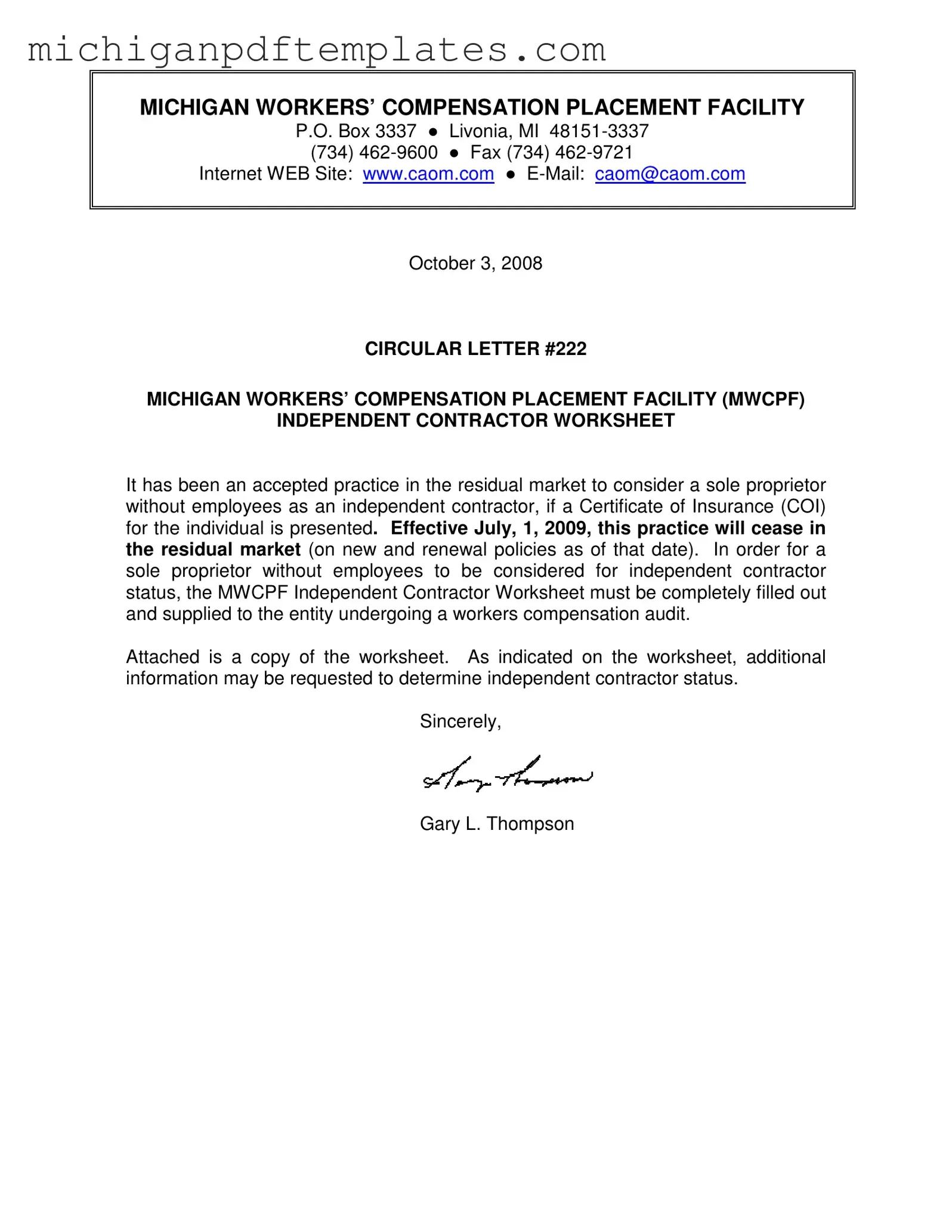The Michigan Workers Independent Contractor Worksheet is a crucial document for sole proprietors seeking to establish their status as independent contractors within the state's workers' compensation system. Effective July 1, 2009, a significant change in policy will require these individuals to complete the worksheet in its entirety to be considered for independent contractor status, especially when presenting a Certificate of Insurance. This form not only collects essential information about the contractor's business structure—whether they operate as a sole proprietor, partnership, corporation, or limited liability company—but also delves into their hiring practices, including whether they employ others or subcontract work. Additionally, the worksheet asks for details about general liability coverage and a history of other clients worked for in the past year. By signing the form, the contractor affirms their independence from the policyholder and acknowledges that they are not covered by the Workers’ Disability Compensation Act. Importantly, while this form serves as a test of independent status, it does not automatically exempt the contractor from the audit process; further verification may still be required. Understanding the nuances of this worksheet is vital for anyone navigating the landscape of independent contracting in Michigan.
